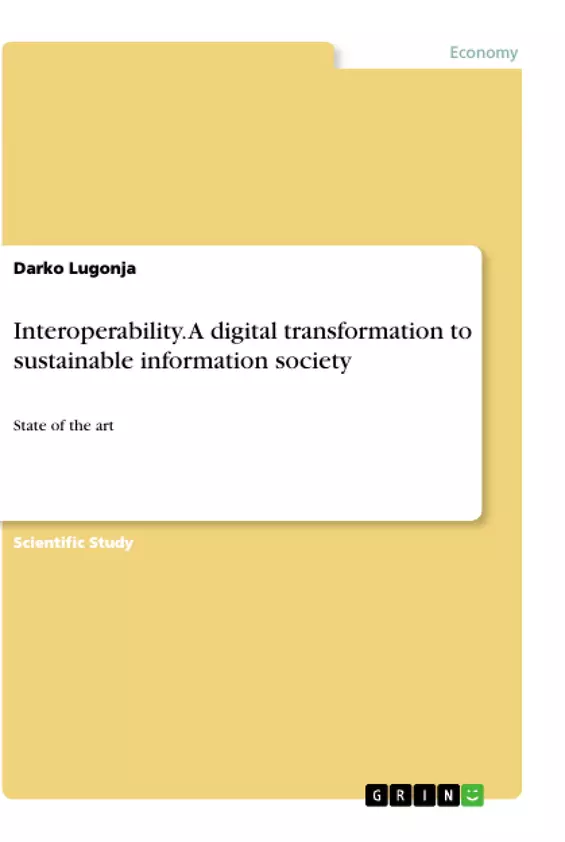Digital technologies may provide various benefits, as well as interoperability risk and adaptability issues. Human knowledge multiplication accelerated dynamics may lead us to the advanced technologies identification and utilization of various opportunities, as well as technological advancement. In order to harmonize such a technological growth and human development opportunities we aim for systematic approach and interoperability development. When considering the public administration digital transformation, holistic approach challenges may become advantages, due to the acknowledgement and education, so processes of adjustment may bring the identification and solution for many challenges, but also provide a platform for further learning and development.
Inhaltsverzeichnis (Table of Contents)
- Introduction
- Public administration digital transformation and institutional interoperability – I30 concept
- IO developments and BCT impact
- Sustainable interoperability (SIO) and adaptability
Zielsetzung und Themenschwerpunkte (Objectives and Key Themes)
This paper aims to explore the positive correlation between adaptability, education, and other individual characteristics in achieving higher levels of interoperability and building inter-institutional interoperability models (I30). It examines the impact of interoperability on the digital transformation of public administration, especially focusing on the I3O concept. The work also investigates the influence of Block Chain Technology (BCT) on interoperability developments and its potential for public administration reform. Additionally, the paper discusses the concept of Sustainable Interoperability (SIO) and its relationship with adaptability in the context of a continuously evolving digital world.
- Interoperability and its impact on digital transformation
- The role of adaptability in achieving higher levels of interoperability
- The potential of Block Chain Technology (BCT) for public administration reform
- Sustainable Interoperability (SIO) and its relation to adaptability
- The development of inter-institutional interoperability models (I30)
Zusammenfassung der Kapitel (Chapter Summaries)
- Introduction: This chapter introduces the concept of interoperability and its significance in the digital transformation of organizations and societies. It highlights the importance of adaptability, education, and individual characteristics in fostering successful interoperability and achieving a sustainable information society (SIS).
- Public administration digital transformation and institutional interoperability – I30 concept: This chapter focuses on the critical role of interoperability in public administration digital transformation, emphasizing the importance of communication readiness and the I3O concept. It defines interoperability and discusses its impact on various aspects of public administration, including e-management, reforms, and governance.
- IO developments and BCT impact: This chapter examines the growing importance of interoperability, as evidenced by the increasing number of search results for the term. It explores the challenges and opportunities presented by Block Chain Technology (BCT) in public administration and its potential for enhancing interoperability. The chapter also discusses limitations to interoperability, including legal, organizational, and technological constraints.
- Sustainable interoperability (SIO) and adaptability: This chapter introduces the concept of Sustainable Interoperability (SIO) and its connection to adaptability in the context of a dynamic digital environment. It highlights the need for social and technological development to be harmonized to ensure a sustainable information society (SIS). The chapter also discusses the importance of considering interoperability in various sectors, including public administration, business, and agriculture.
Schlüsselwörter (Keywords)
The main keywords and focus topics of this text include interoperability, adaptability, public administration digital transformation, holistic approach, sustainable interoperability (SIO), inter-institutional interoperability (I30), Block Chain Technology (BCT), and the sustainable information society (SIS).
- Quote paper
- Darko Lugonja (Author), 2019, Interoperability. A digital transformation to sustainable information society, Munich, GRIN Verlag, https://www.grin.com/document/508791



